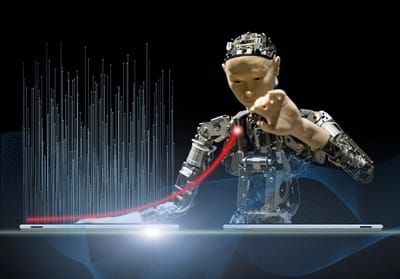iwwerdeems AI has the potential to create new job opportunities and increase productivity, it can also lead to the transformation or elimination of certain roles. The impact of AI on employment is a complex and debated topic.
Here are some ways in which job loss may occur due to AI.
Automatisatioun vun Routine Aufgaben
AI is particularly effective at automating routine, repetitive tasks. Jobs that involve manual and repetitive activities are more susceptible to automation, potentially leading to job displacement for workers in those roles.
Méi Effizienz
AI can enhance efficiency in various processes, leading to reduced labor requirements. This could result in downsizing or restructuring of certain job functions as organizations seek to optimize their operations.
Industrie Transformatioun
Certain industries may undergo significant transformations due to AI, leading to changes in job demands. Jobs that become obsolete in declining industries may result in job losses for workers in those sectors.
Job Displacement in Specific Sectors
Some sectors may experience more significant job displacement than others. For example, manufacturing, data entry, customer service, and transportation are areas where AI technologies like robotics and natural language processing could have a notable impact on employment.
Skilled Labor Impact
While AI can create new opportunities, it may also impact skilled labor markets. Jobs that involve routine cognitive tasks, such as data analysis or certain aspects of legal and financial work, may see changes in demand.
Adoption of AI Technologies
The rate at which organizations adopt AI technologies plays a crucial role in job displacement. Rapid adoption without adequate measures for workforce transition or upskilling can result in more severe job losses.
Rollen änneren
While AI can lead to job displacement in certain areas, it also has the potential to create new jobs and industries. The development, maintenance, and improvement of AI systems require skilled professionals, and new roles may emerge as a result of technological advancements. Additionally, AI can augment human capabilities, leading to the creation of new, collaborative work environments.
Governments, businesses, and educational institutions play a vital role in mitigating the negative impacts of AI on employment. Implementing policies that support retraining and upskilling programs, fostering a culture of continuous learning, and promoting the responsible deployment of AI technologies are essential steps in addressing the challenges associated with job displacement.
It’s essential to note that the overall impact of AI on employment is influenced by various factors, including government policies, workforce adaptation, and societal attitudes toward technology. Some argue that AI can lead to a shift in the types of jobs available rather than outright job loss.
Ultimately, the relationship between AI and employment is complex, and its effects depend on how society adapts to and harnesses the potential of AI technologies. Policymakers, businesses, and educational institutions play a crucial role in managing the transition and ensuring that the benefits of AI are distributed equitably.























